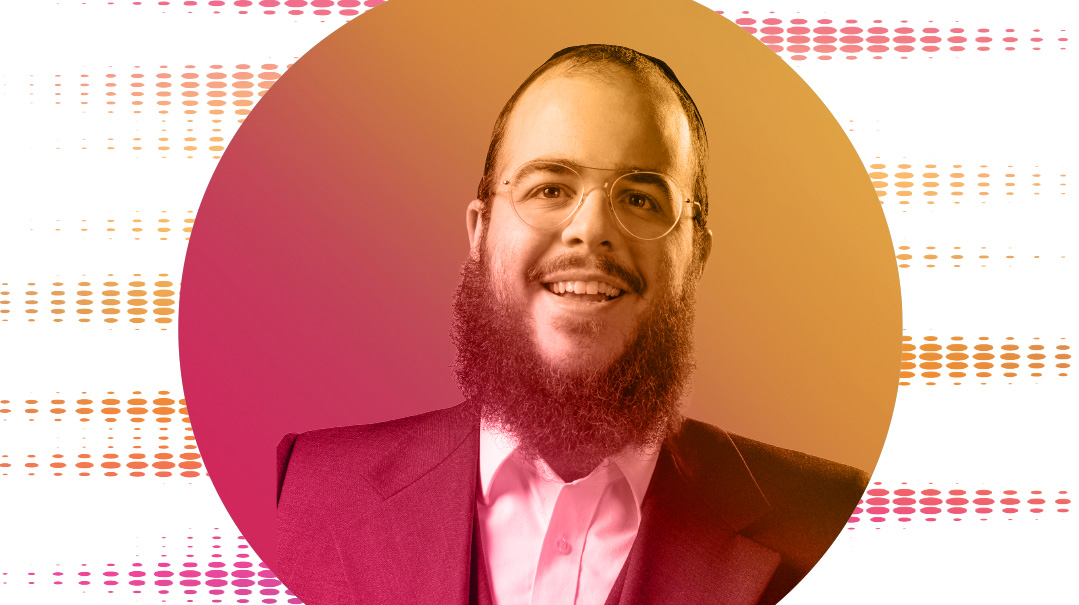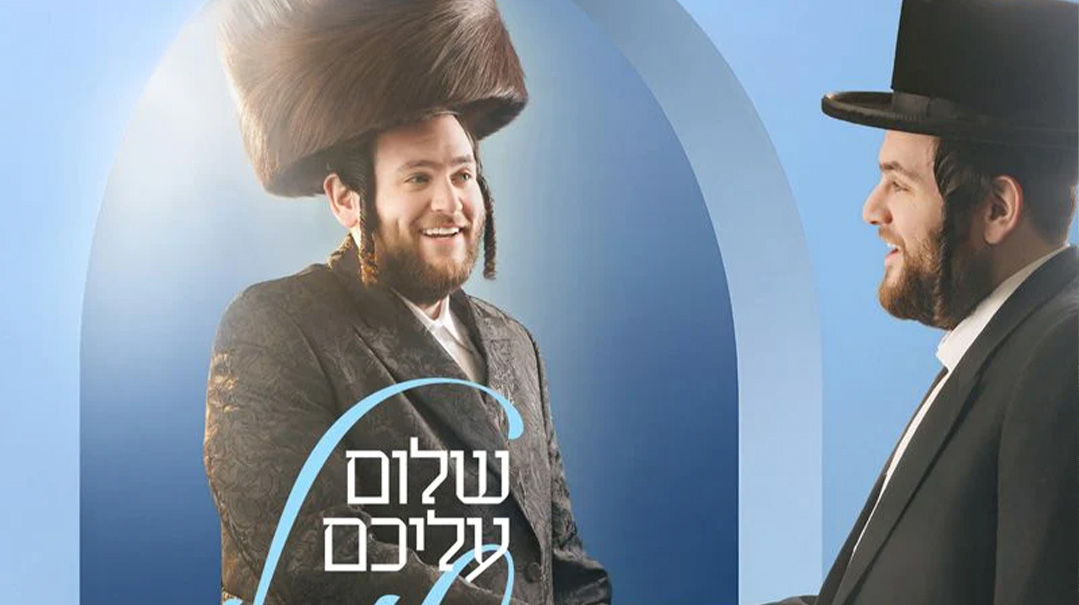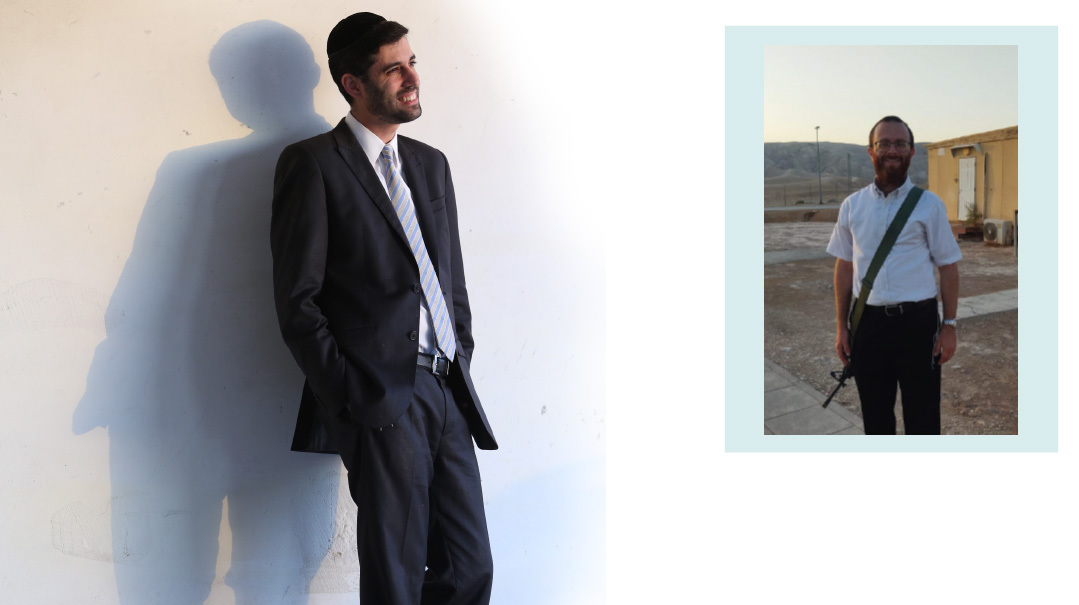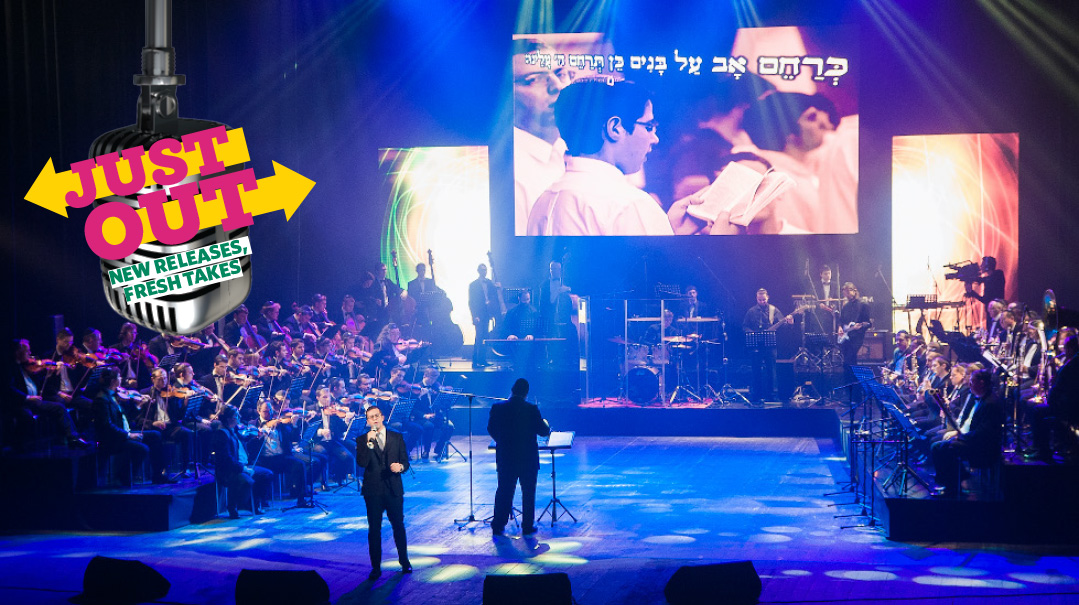Concerted Efforts
| September 26, 2023In a peek behind the props, concert producers share a bit of what it takes to keep the music playing
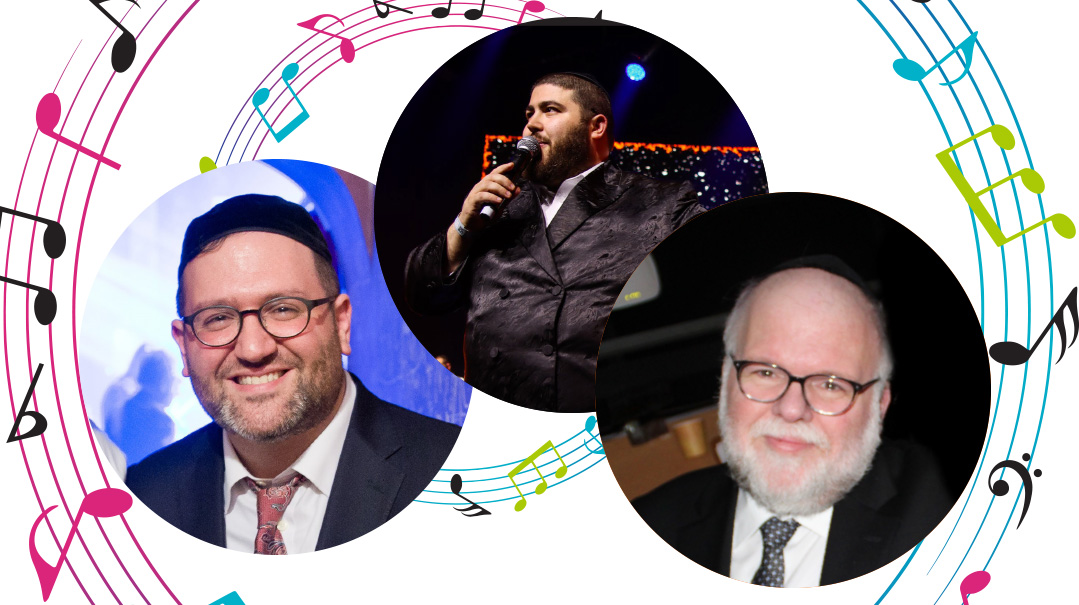
An entire week of Chol Hamoed this year means a concert will likely be on the agenda. But as the lights dim, the curtain rises, and the show begins for you, it’s already the endgame for the creators and producers who’ve been working for weeks or months to make it happen. While the singers segue from song to song in a seemingly fun and effortless performance with perfect accompaniment and background effects, those organizers are standing backstage, grateful that they’re near the finish line. In a peek behind the props, concert producers share a bit of what it takes to keep the music playing
ELI GERSTNER
HOW I GOT STARTED
The first concerts I ever produced, when I was about 15 or 16 years old, were for the camps I was in at the time. I got to play drums, hire/coordinate the musicians, the singers, the sound, and of course the song selection, which was a teenage Jewish music fan’s dream come true. When I was around 18 and had just come out with my first album, there was a yeshivah doing a fundraising concert who had hired Avraham Fried as the main singer and me as the opening act. And then I got a surprise call from them, asking me to produce the event. I don’t know if Avremel even remembers this, but he had suggested to the client that maybe I could pull it together for them. And I did, which was a big deal for me at the time. Soon after releasing my solo projects — The Chevra, Menucha, and the Yeshiva Boys Choir — I started producing their events all over the world.
Soon people started asking me to produce concerts other than my own. Once I did an outdoor Chol Hamoed event for a medical rehab center with Avraham Fried and YBC, and 25,000 people came. That was the first time I dealt with police and heavy security. After that I was asked to come to Crown Heights and organize the Chabad Parade, coordinating with the police department and stages for the performers. One event led to another, and baruch Hashem, I wound up producing the biggest frum events in America.
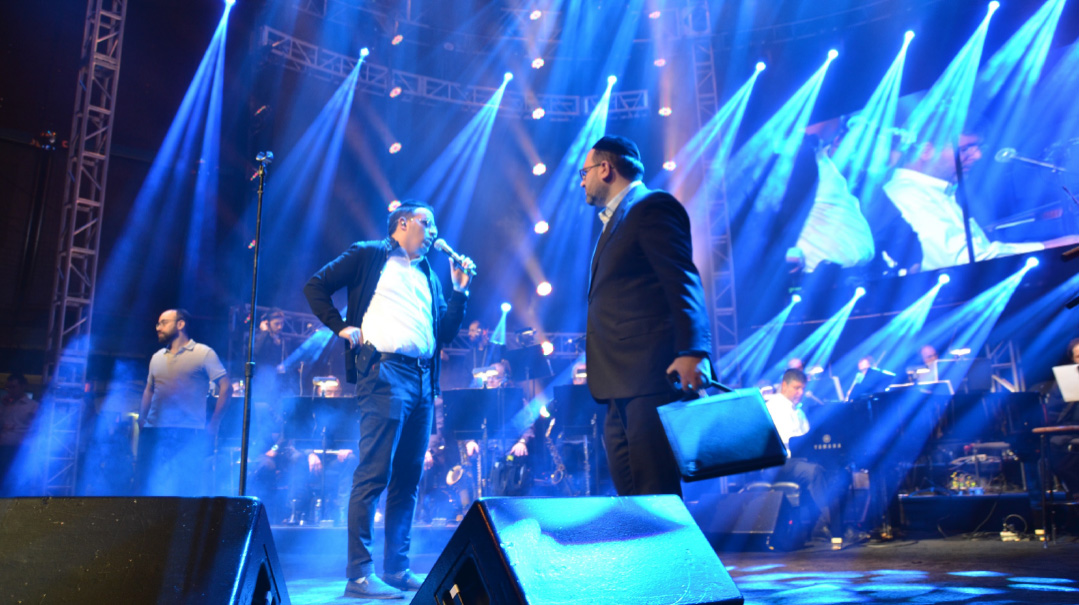
HOW I MAKE THE PLAYLIST
If there are mostly kids in the audience, it has to be 90 percent fast songs — with slow songs, they just get bored. When the audience is primarily adults, then you can get more creative with the mix of fast and slow songs, especially if the orchestra is very high end, with a large string section.
Dinners and smaller concerts are much simpler, and songs can be chosen and rehearsed just a week before, but with big productions, it gets more complicated. Within a couple weeks of hiring, I prepare a list of songs. Then I prepare the arrangements for the orchestras, as well as a computer-generated version of each segment to give to the singers, choirs, musicians, as well as the lights, programming and video teams. By the time we meet at the first rehearsal, everyone has already rehearsed separately with an accurate version of the song. The tempo is set, all the lights and screens are preprogrammed, and everything has to go boom at the same second. When people are paying $1,000 a seat, the event has to be perfect.
WHAT I WISH I’D KNOWN BACK THEN
How to deal with the labor unions. But no one could have taught me what I know now — it had to be my own hard-won experience. The Lincoln Center is probably the most extreme and expensive example, but in most big show venues, labor unions are contracted to do all the labor. You cannot bring in outsiders to build a stage — they have to do everything, and you pay them hundreds of dollars per hour, but you have no choice. This winds up being the biggest chunk of the cost for the organizations. There are musicians’ unions, too, but each union has its own contracts and rules. For example, the workers need a five-minute break about every hour. It makes no difference what they’re doing, they’ll put down their tools and walk away on the hour. Every three or four hours, they’re entitled to an hour’s meal break. The client has to pay for that hour, plus the client has to pay to order the workers’ meals, which have their own requirements — for example, certain meals have to be hot, and include a protein.
It took me time to realize that there are loopholes in the contract, like the allowance to stagger the meal break, so that half the team can keep working and we don’t waste an entire hour. That alone can save tens of thousands of dollars. By now, I’ve earned some trust with the union, and figured out how to deal with them and speak to them in their language.
I’ve also learned how to take the lead in the show. At the beginning, being a singer myself hired by other producers, I felt for the artist and would always listen to him. If a singer was sick of singing a particular song and wanted to go for something else, I’d listen. But now I make my judgment calls as a fan and as the person responsible for the show’s success. I know what the audience wants and expects to hear. Even if the singer feels he’s sung it a thousand times, the audience is waiting to hear his trademark piece.
THE LINEUP
It all comes down to budget. By now, when I hear the budget that an organization wants to allocate to their concert, I can show them their options within a few minutes. I can reckon the cost of the singers, the stage, the lighting, the advertising, the venues, and divide the budget in my head. Clients want the biggest headliners, but obviously they are the most expensive.
STAGE SURPRISES
Before digitalization there was more freedom, but today there’s been nothing unrehearsed at the largest-scale events. We pre-program everything before, creating a timeline of every second of the concert, so that the effects, the lighting and the screen are perfectly synchronized.
But that doesn’t mean something can’t go wrong. Many years ago, at a concert I wasn’t producing, I was singing with the Chevra when the sound system went down completely. The organizer asked us to go offstage while he tried to figure it out, but we had no idea how long that would take, and the audience wanted to hear music. So the Chevra began to sing a cappella, with just the natural acoustics carrying the sound. We sang with harmonies, song after song, to a totally silent hall. It took half an hour for the power to go back on, and we finished with a booming “Yehei” with the full orchestra.
THE MUSICIANS WE PREFER
We use big Broadway professionals, usually non-Jewish, who read music like you read a book. They look at the chart at rehearsal and play the music as if they’ve played it a thousand times before. I usually explain the meaning of the song, trying to get a little more soul out of them, and some have even emailed me after the show, “Can you send me the original version of X song, it was really beautiful.” In addition, I tell everyone about the organization we’re benefitting, whether it’s kids who’ve lost a parent or special children. It’s important that the entire staff — even the union workers — know we’re putting our all in for an important cause.
UNEXPECTED GIFTS
HASC 34 was uniquely challenging, due to Covid rules. In a huge logistical feat, we held the concert in the American Dream Mall, covering the ice on their skating rink and building a huge stage and all the seating on it, with only a few hundred in the audience, and the rest watching on livestream. One thing that was different for the singers was the lack of personal space. Usually, each has their own room backstage, but here we were, all lumped together. I walked in to the back at one point that day and I thought it might be a weird atmosphere, but there was everyone, sitting around together harmonizing, with Joey Newcomb leading a warm kumzitz.
LAST-MINUTE CHALLENGES
I’m not nervous that a musician will mess up, like I was when I was 18, just starting out and stressed throughout the concert. I’m actually relaxed on concert nights, sending good mood vibes to the entire team. If the producer is calm, then everyone tends to be calm as well. But I guess underneath I’m nervous about things totally beyond our control, like someone tripping, or a light falling down. There was the concert we did in Central Park that had to be interrupted when an ambulance had to get through to take a woman from the audience to the hospital to give birth.
I remember one time we brought in a top sound engineer from Eretz Yisrael who wanted a $250,000 music board. We found a budget to rent it, and it controlled all the sound in the room. Forty-five minutes before the show, we went on break, and when we came back, the sound guy whispered to me that the board wasn’t turning on. At length, we realized it had ‘gone to sleep,’ as computers do, but he didn’t know where the button was to wake it up. He knew everything but not that. Baruch Hashem, we found it underneath in the nick of time.
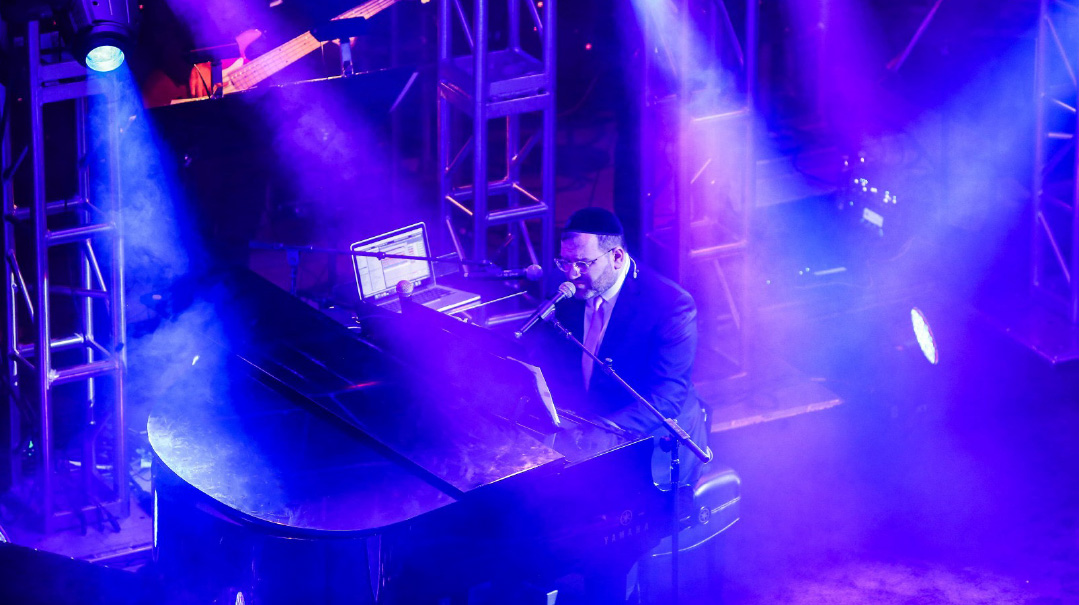
THE BEST MOMENTS
As a huge fan of Yosi Piamenta a”h and having had the zechus to work with him as a teenager, I wanted to do a tribute to him after he passed away, so on HASC 29, I put together a medley of his biggest hits and had his children (all talented in their own right) perform the tribute with images and video of Yosi on the big screen behind the symphony orchestra. I enjoyed every second of it, both in putting together the medley and the actual performance. We were able to honor someone very special, while giving chizuk to the family in mourning.
HOW I READ AN AUDIENCE
At the higher end, it is just singing along and clapping. People want to enjoy the show, without the guy next to them jumping up and down and screaming. At the cheaper end of the scale, like Chol Hamoed concerts, for example, the crowd is younger and will dance in the aisles. It’s leibedig and adds to the ruach, but as well as reading the crowd, we have to take the venue into account. If there is some space between the front row and the stage, then a little bit of dancing between them can be okay. But in Queens College, for example, the front row is very close to the stage, and dancing there would disturb members of the audience, who have paid a lot of money for those front seats. We ask people to please stay near their seats.
At Yeshiva Boys Choir concerts, we used to give a ‘bochurim discount,’ then seat the bochurim in the corners, so they could dance, which added great energy without disturbing other concert goers.
ONCE IT’S OVER
Since I’m usually up the night before a major concert and busy setting up the entire day, I haven’t slept for 24 hours by the time the concert is over. But I don’t go to sleep before calling and messaging all the artists and people who took part in the concert. The more tired and slurred my words sound, the more they appreciate the call. That takes until alos, when I daven Shacharis and then I sleep most of the day.
There have been some crazy exceptions, like when, the day after HASC 34, I went straight on to filming the fundraiser for Chessed 24/7, but usually I can catch up on some sleep before moving on to the next one.
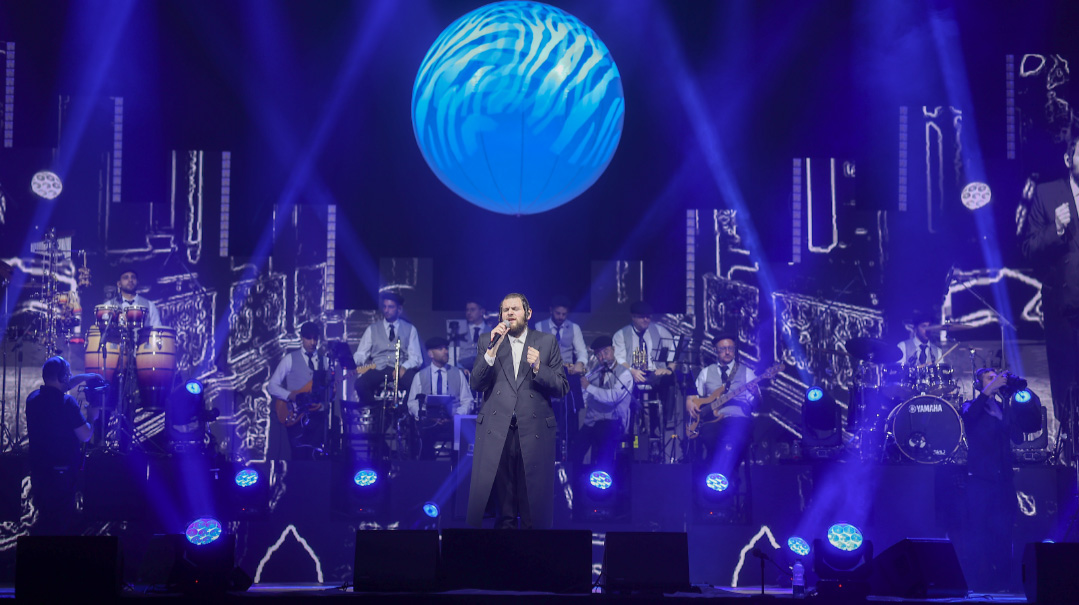
SHALOM WAGSCHAL
HOW I GOT STARTED
I was pretty young when I decided that if I continued to work as a wedding singer, I’d only be an average vocalist, but if I worked in production, I could aim for the top. With that realization, I stopped singing and became the producer of Hamenagnim, the band I co-owned with Moishy Roth. The first wedding we did was on Lag B’omer, and the following Succos, we released an album called Eloka D’Meir Aneini, together with Mishpacha. For our second album, Levado, we brought in MBD and Dovid Gabay. Not long afterward, we felt professional enough to put on our first concert, Kumzing 1, with Lipa and Dovid Gabay, also released as a CD and DVD.
There were only 150 yeshivah bochurim in the audience, but Kumzing 1 began a revolution. The whole kosher scene of kumzitzes and concerts for bochurim began with that Kumzing.
Two years later, we held Kumzing 2 for 700 bochurim, and even charged admission. I know that MBD recorded kumzitzes 25 years ago, but he was way ahead of his time — Kumzing was the first of today’s genre. Next came the Kumtantz event, and after that, Dirshu hired me to create musical productions at their grand siyumim.
Next, I started to do events in Binyanei Ha’umah, and was hired by a lot of the municipalities of Israeli towns with chareidi populations to create bein hazmanim concerts. I think the young producers have it easier today: hire a stadium, bring in singers, and the bochurim will come… but 12 years ago, none of this was obvious.
WHAT I WISH I’D KNOWN BACK THEN
I was very naive at that time, and my first mistake cost me $30,000. It was on Kumzing 1, and we’d arranged a 120-minute project, when every minute of the orchestra, professional recording, and shooting cost $1,000. I wish I’d known that a 90-minute project could be just as successful. At the time I was just 22 years old and didn’t have the money to lose, so this was a big setback for me, which I struggled to recover from over the next two years. In the meantime, I produced singles — even though others would have thrown in the towel and given up, I had my dreams.
THE LINE-UP
Today, I produce two kinds of concerts. The ones I’m hired to produce by the different municipalities are easier, since they tell me what they want and which performers to invite, and I just do my job. The city subsidizes the concerts, selling tickets very cheaply. My own productions, which I run a few times a year, are higher-end, and I’m always on the lookout for something creative and special. I work with MBD, Avremel, Shmueli Ungar and Naftali Kempeh, and I also like to bring in some surprises, someone who wasn’t advertised, for the crowd to enjoy.
MY TOUGHEST PRODUCTION
Kumtantz, for sure. I brought around 1,000 bochurim to a nice wedding venue in Ashdod, half of them Litvish yeshivah boys, the others chassidish. The ticket price was 70 shekels, and the idea was that they would dance and sing, actually becoming the actors for the video. I remember that as they all arrived, I kept doubting that it could actually work.
I felt lost. I didn’t know what to do to get the event moving. Luckily, my then-partner, Moishy Roth, saved the day, stepping forward and explaining to the crowd what we were going to do and how to participate. When the first medley began, a stone rolled off my heart. I realized that we were all on the same team and it would be beautiful. Even though it was successful, I haven’t done another one of those again. The stress was too much….
MY MOST CHALLENGING EVENT
A few years ago, we advertised a Chanukah concert with Naftali Kempeh in Binyanei Ha’umah. There was supposed to be some government funding, but that didn’t come through in the end, so the risk ended up being mine. It was just after his album release, but still, filling up 2,800 seats for a new singer isn’t easy. I had to sell the tickets, which was very hard work in the marketing department. Baruch Hashem, the hall filled up in the end, and Naftali was amazing, but I was ready for the worst.
HOW I READ AN AUDIENCE
Since I’m running the show, if I feel the crowd is in a different mood and what we planned is too heavy or too boring, I can always speak to the music director through the headphones and tell him to switch something. Today each musician has a tablet, and the arranger can just move from Part 10 to Part 12, for example. But you have to be flexible, and your musicians have to trust you.
STAGE SURPRISES
Last year, on Motzaei Shabbos Bereishis, I did Kumzing 3 with MBD, featuring his biggest hits and backed up by a gallery of singers. The program was over three hours long, and I was worried that Mordche might not be able to stand on stage for so long. When we finally finished, he came over and said, “Why are we done? I could sing for another hour!”
THE BEST MOMENTS
The end of the concert, when the vision has come to life successfully, and b’siyata d’Shmaya everything worked out, the lights didn’t fall down and the singers didn’t lose their voices. And of course, special moments in the concert, when the audience gets emotional, or cheers and gets excited. Those get me emotional in turn.
ONCE IT’S OVER
When the first day of Elul and the first day of Cheshvan come around, I really need a break. Either I go away with my wife and family, or sometimes I go away myself for a couple of days to recharge. But it’s always with a feeling of gratitude. Baruch Hashem, I’ve been doing this for 15 years and it’s worked out beyond my expectations.
ELI I. (Gronny and Icky Productions)
HOW I GOT STARTED
I’m a concert lover. Over the years, I’d run to Eichler’s to buy tickets and went to every show advertised. There’s nothing like sitting at a concert with family or friends. At a certain point, feeling that there was potential for fresh energy in the concert halls, I naively got together with a friend, Eliyahu G., and created Gronny & Icky Productions. We threw ourselves into what most people considered a crowded field, and we had more critics than fans. People thought I’d lost my mind.
But we weren’t deterred. For Succos 2021, right after Covid, we found a theatre, made a deposit, called up singers and hired them for a Chol Hamoed concert. It was absolutely frightening. We were young and single, suddenly spending big money which we’d never done before, getting official emails and contracts, and everybody around us just thought we were crazy. One factor that stood in our favor was that because of Covid, the venue was taking last minute bookings, and so were all our vendors. We were able to swipe our credit cards and had time to pay back after the event. In a regular year, you have to pay deposits six months in advance, but Covid meant empty calendars.
It was petrifying to think that the hall wouldn’t fill up. My neighbor, who’s been running a Chol Hamoed circus for years, reassured me. “Don’t worry, Jews are last-minute people, you’ll sell it all on the day of the show.” And we did.
As for the music, we were rookies. We hired Freilich Band, and director Avrumi Schreiber is a wonderful guy who went above and beyond his job description and told us exactly what we needed (such as a stage director), contributing to the success of the night. In the end, Benny Friedman, 8th Day, Eli Marcus and Moshe Tischler sang to roaring crowds in a sold-out theatre.
WHAT I WISH I’D KNOWN BACK THEN
Last Pesach, we had the zechus of making Yom Tov concerts even more special, when we developed a relationship with Shaul Greenwald from Riverside Abstract and the Riverside family of companies. We called it the Riverside Experience, and the show benefits Zisel’s Links, an organization named after Shaul’s mother-in-law, which provides much-needed support and services to children and teens who have lost a parent. During the show, we showed a short film about the organization, and the singers engaged the crowds in a special tribute song. The crowd then received a text message encouraging people to donate by responding, “I’m in,” and $25,000 was raised on the spot. That was special, and I wish we would have had this opportunity from the get-go.
A NEAR-FIASCO
One really scary moment was when we used a ticket website that messed up our seating. The guests’ assigned seat numbers didn’t match the actual numbers on the chairs. It was near chaos, as the crowd roamed around, unsure where to go, and we were petrified. Our security guards and ushers were amazing, though. They’re used to crowd control (and our frum crowds are much easier to handle than regular concert-goers). Calm, cool, and collected, they eventually sat everyone down, and we began the show. There was no flood of complaints afterward, either, just one or two comments letting us know about the issues.
THE LINE-UP
I’m the business mind behind the shows, and we delegate around here. The singers and songs are handpicked by a passionate team who run so much of online Jewish music, I & Me Media. They analyze the data and know exactly who the public wants to have as part of their Chol Hamoed family fun.
A lot goes into picking songs. The crowds are diverse, coming in from Brooklyn, Queens, Staten Island, Lakewood, Jackson, Toms River, Manchester, Monsey, Five Towns, Elizabeth, Teaneck and all the surrounding areas. We choose melodies that guests from every background can enjoy and sing along to. The singers are very involved, because they know what the current hottest hits are from all their nights on the wedding circuit.
Concerts used to be local, city by city, at night — and people would go as night activity, after a long Chol Hamoed trip. We redefined that, because we make our concerts centrally located for the entire tristate area, and during the day, so the whole family can join. That is the Chol Hamoed trip.
THE BEST MOMENTS
Part of my role is to find the venue, so I have to check out possible theaters, looking for an ideal stage, orchestra pit, and seating, as well as checking that any immodest pictures can be covered up for us. Then there’s the marketing, always working on a strategy as well as a Plan B if the show doesn’t fill up, and fine-tuning all details so the event will run like clockwork. After all that preparation, the feeling of achdus in the arena gets me emotional. People from all walks of Klal Yisrael come together with their beautiful families to spend a few hours rejoicing.
The Overture is my favorite moment. The Grand Finale is my worst. It always was, even as a guest in the audience. It feels like the last day of camp when you have to say goodbye to the best memories.
LAST-MINUTE CHALLENGES
This past Pesach, the Riverside Experience show was sold out way before Yom Tov. It was hard to turn down thousands of people who reached out, wanting to join. We were thinking of livestreaming the show so they could at least be with us virtually. There would have been a fee to watch, and the proceeds were going to go straight to Zisel’s Links. When we approached the singers with the idea, though, they immediately said, “Let’s just hustle a second show.” Every one of the singers and musicians had a gig at hotel programs that second night, but they were willing to push them up an hour or so. And so we pulled off the unthinkable and just announced a second show. People didn’t believe it. It felt like color war breakout. We filled up half the arena within six hours of the announcement. Our biggest fear was clearing the parking lot and traffic. The singers had drivers lined up outside and were in their cars en route to their next gigs, 30 seconds after the Grand Finale.
HOW WE READ AN AUDIENCE
We encourage the audience to sing. We love when fathers stand up and dance with their children. It’s beautiful to see strangers just grab each other and start dancing. For security reasons we can’t allow dancing to get out of hand, and we also don’t allow it to take place in a way that is blocking the view for others who just want to sit peacefully and watch the show.
UNEXPECTED GIFTS
We chose a song that we thought would come out beautifully and touch the hearts of each individual in the crowd, in honor of Zisel’s Links. Immediately before the song, though, the singers felt that it wasn’t the best selection, and chose to rather sing the classic “Acheinu Kol Beis Yisrael.” They followed their instincts, and the “I’m ins” came pouring in.
ONCE IT’S OVER
I spend hours looking at the footage. It’s nice to see the hard work paid off. I respond to all of the thank-you messages, and it’s not long until we start planning the next show.
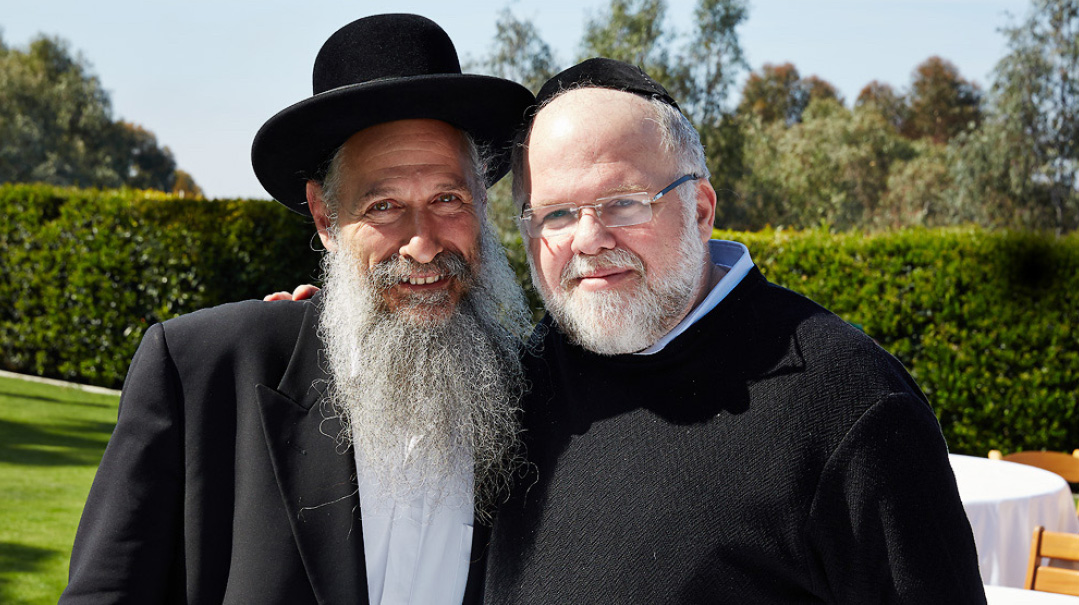
SHEYA MENDLOWITZ
HOW I GOT STARTED
The concerts were a natural follow-on to producing albums, because they were a way of promoting the music and generating excitement about it. Hashem gave me a gift for every end of the Jewish music business, and I’m grateful for the many opportunities He gave me to break the glass ceiling in Jewish music (like bringing a 65-piece symphony orchestra to Lincoln Center. Musicians wait their whole career for the chance to perform there, and Jewish music took its place in the limelight there, too.)
I had produced concerts for Yigal Calek’s London School of Jewish Song, and in March 1984 I produced a Carlebach concert with separate seating, which might have been a Shlomo first. But the idea of HASC’s A Time for Music was a very big turning point for me, and for Jewish music. At HASC 1, in January 1988, we took the same singers who were singing concerts in Brooklyn College for $25 a seat, and put them into Avery Fisher Hall. We gave it a new look and took things up to a new level, then charged from $50 to $500 a ticket. It was unheard of at the time, but of course it was beautiful, and the rest is history.
WHAT I WISH I’D KNOWN BACK THEN
When I started, concerts were the great unknown — we had no idea what to expect. But I don’t regret any mistakes I made, because they were part of the process. For example, we very quickly learned that you have to dedicate plenty time to sound checks — you can’t just plug in the system and expect it to work, because there were times it didn’t. For the early HASC shows, we hired professional sound companies, and every year I’d decide to up the ante and spend more on a better sound company, because it made such a difference to the beauty and professionalism of the entire show.
One year, we used a very professional sound company. While regular shows rent the theater and rehearse for a week, we only had four or five hours to rehearse, on the day of the show. We were all there, rehearsing, but no sound was coming out of the system. “I’ve never had this before, I don’t know… let’s try this or that,” the owner kept saying. Forty-five minutes before the show, we took a break — we ate supper and we davened Maariv with a minyan, and I raised my eyes to Hashem: “Hashem, You are producing this show, not me. Three thousand people spent money here and are looking forward to a beautiful show. What should we do?”
And all of a sudden, Hashem sent an idea into my head. At that time, we used to record the albums live using a “splitter box” and a recording truck outside, meaning that the mics that the singers and musicians used were connected to a box that split the sound, sending a part into the truck’s studio recording equipment, and the rest into the hall. No sound was working in the hall, but the part we sent into the truck was fine. So I told the engineers to get the sound from the recording truck piped back into the hall. It worked!
LAST-MINUTE CHALLENGES
In 2008, I was producing a Big Event concert with Lipa Schmeltzer performing. The hall was almost sold out, when the concert was closed down. This cancellation made headlines from the New York Times to the Jerusalem Post, and everywhere in between. The BBC and CBS both came to my house, the NYT and the WSJ called me for the story, and the whole world took sides. We refunded every penny of ticket money, taking a massive loss. It was a very tough thing for me to go through, with all the publicity and talk in real time. Then I got a phone call from my second grade rebbi, my mentor with whom I’d remained extremely close, Rabbi Eli Teitelbaum. We had a whole talk about the Event, and he complimented me on how I had handled it, because I had asked people not to criticize the rabbanim. Reb Eli started to talk about what he felt could have been done differently, and then he said to me, “Don’t worry, Sheya, you’ll do this concert next year. Just be patient and don’t bash the rabbanim.”
In the end, things quietened down, and I listened to Reb Eli and held the concert a year later — the year Reb Eli passed away. And I was able to give kavod to my rebbi, because we dedicated a beautiful tribute section to his memory, with Abie Rotenberg’s song “Matzdikei Harabbim” describing Reb Eli’s impact on Yiddishkeit and especially Jewish music.
THE WINNING FORMULA
A concert has an opening, middle, and end, and you have to know how to build up a nice show. I’ve always felt that we should touch people’s emotions — they want to be able to cry during a show — but to make sure to end off on a happy and hopeful note. People should walk out of a concert on a high, which will carry them until the recording comes out and until they see the ads for the next show. I believe that music producers should be keeping the musical excitement bubbling.
THE BEST MOMENTS
The first HASC was emotional on so many levels, especially the HASC theme. I asked my musical mentor Yisroel Lamm, whose musical genius brought the idea to fruition, to write a theme because I had a hunch it would be around for a long time, and that as soon as people hear it, they’ll associate it with HASC’s A Time for Music. I remember listening to it a few days before, when we rented a rehearsal studio in the city. That was when I realized it was really happening.
ONCE IT’S OVER
Well, there was the first year, when a couple who were major sponsors of A Time for Music arranged a mini vacation for MBD, me, and our wives after all that hard work — Mordche was the star singer and there with me on the HASC journey from the beginning. They were very generous in sponsoring the first show and the video recording of HASC 2, and they took us to Miami. He wanted us to be at the airport at seven a.m. the morning after the concert. “Are you meshugeh?” I said, but that was what we did. The only problem was that there were no cell phones at that time, and everybody was trying to reach us to talk about the concert. The next years, we were smarter. The public was so involved in the music back then, and everyone wanted to share their piece and offer opinions on the show. We learned to stay within reach of our phones, and it was a nice thing.
(Originally featured in Mishpacha, Issue 980)
Oops! We could not locate your form.


